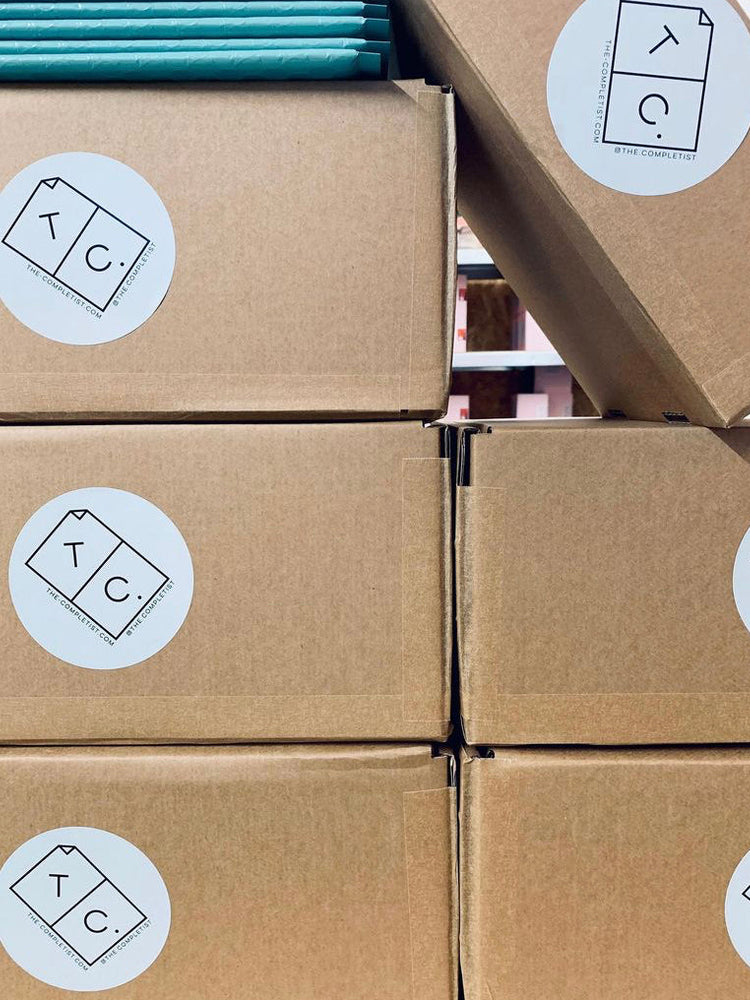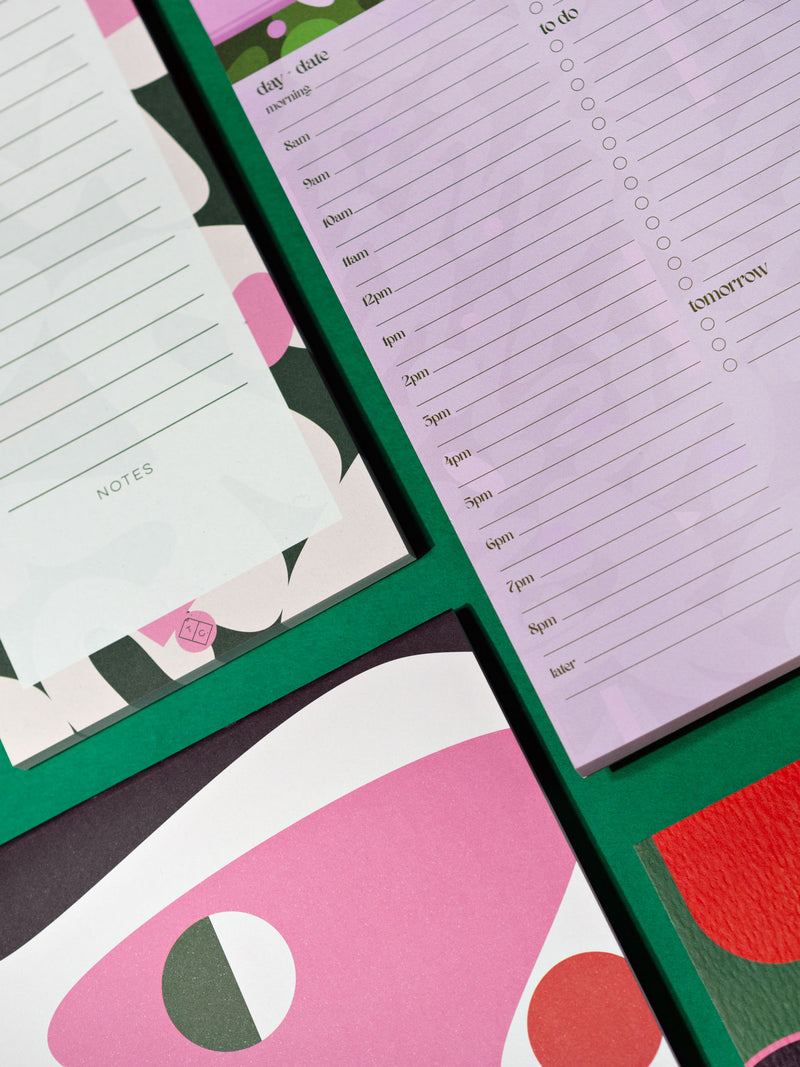Your cart is empty
Keep ShoppingThe Nightmare that is VAT IOSS

This week's journal post is a bit of a departure from the usual creative inspo and chat about pretty things and I promise I'll be back to regular broadcasting shortly. BUT - I've had a lot of people asking me what I know about the murky world of the new VAT IOSS system coming into effect on July 1st. Being the kind of person I am (constantly paranoid I'm somehow going to make a 1p miscalculation on my VAT return and get fined £1,000,000 for it - totally reasonable, of course) I've been reading, and reading, and reading (and speaking to people who've been reading) about these new changes. Basically, it's not simple (actually, it's a big mess) - even accountants are confused - so don't feel bad if it feels really daunting and makes you want to hide in under your bed. Tax makes me feel like that too (and a bit like I'm being shouted at in a foreign language). But I'm going to share the bits of info and tips I have so far so it's hopefully a little less scary. Obvious disclaimer - I am not an accountant, and I'm not advising in any official capacity - I'm simply sharing my info and thoughts as a humble stationery designer (and novice EU tax enthusiast). I'm sure some of the things below are totally wrong, and I'll update anything as soon as it changes.
What is the VAT IOSS system anyway? What's the big deal?
You know how if you order something from the USA, you get a pesky request from Royal Mail to pay £3 in VAT and £12 in fees? Well, if you sell to the EU, your customers have been getting requests like this from their postal service for any orders over €22 since the UK left the EU. As of July 1st, that €22 threshold is going away, meaning that if they buy a £3.50 card, they'll pay the VAT and the fee, which will probably be more than the value of the item itself. Annoying for small orders (annoying for all orders, actually). If you sell to people in the EU, you'll have probably seen a drop in your direct EU sales anyway, because a lot of people don't want to pay the import charges. But, with all these new rules, a new system comes into place called VAT IOSS. It's not compulsory to register for it yet, but it does mean you might have a few irate customers who get stung with fees if you don't. And we all want our customers to be happy/not sending angry emails/not screaming expletives interspersed with our company names in the faces of anyone who will listen. So I think it makes sense to sort this out sooner rather than later - it's more admin for you as a business, but if it results in more sales, then ultimately it's worth it. Conversely, if you don't think it's worth it, then that's okay too. If this is you, keep reading, because I do have another option for you to keep in mind before you close up shop selling to the EU completely.
Also - just a note, because there's no graceful place to squeeze in this info - this is all for orders up to €150 in value. Anything over that will be dealt with by the postal service/carrier and customer on the other end.
This sounds rubbish. What are my options?
Yep, it definitely is. And there's no sugar coating it, if there was no Brexit, we wouldn't be dealing with this. But here we are. So, firstly as small seller, there is one 'work around' on this, if you decide these new rules are too much for you. Platforms like Etsy are liable for the submissions of VAT IOSS (as the sales contract is through them) so you could just turn off shipping to the EU through your website and redirect sales through your own Etsy store. You'd then just quote Etsy's VAT IOSS number on your parcels (if you have both a your own website and an Etsy like us, you'd have to use Etsy's number for the sales through them anyway). Obviously there's Etsy fees etc to contend with, but this could be a good way to keep the EU sales coming without the extra paperwork (for a handsome Etsy fee or 4, of course).
If you want to keep sales going through your own website (like us) then you have a few options. None are simple, so prepare yourself for a lot of jargon and confusion (and conflicting info that changes frequently). Basically, there's no easy way to do this yourself. Two weeks ago we were told by our accountants you could do all this through Ireland yourself. Then the guidance changed (or not, or the conflicting information was deleted, or tax gremlins - WHO KNOWS) and now all EU countries require you to have an intermediary to file VAT IOSS - which means: more expense/admin/bleurgh.
Firstly, the wonderful Neal from Present + Correct sent me this from Royal Mail. They recommend 2 options (which I'll get into in a sec) or their own PDDP (postal delivery duties paid) system. RM PDDP is apparently still in beta testing, and while it's supposed to be ready in time, there's no info on it (including no info on costs) so for me, I've shelved that one for now - I don't really deal well with waiting on a system that 'might' be ready in time, especially from Royal Mail (shout out to my RM man Paddy who is their shining star of sunshine and roses - keeping it positive in this less than happy post!)
RM recommend two other companies who can collect the VAT and remit it for you (for a fee), acting as your intermediary. One is called Taxamo, who charge a flat rate of £2 per parcel, and the other is Deloitte, who charge a £300 sign up fee, plus £2000 to do the returns. For most of us, option 1 is looking good right now, right? Yeah, I thought that too. But if you're on Shopify like a lot of us are, here's the catch - Taxamo runs on integration with your website checkout, and you can't change the checkout APIs on Shopify unless you're on their Shopify Plus plan. Thinking of upgrading? It starts at £2000 per month, so that's just the news we all needed. I've read through a lot of Shopify forums and spoken to the amazing Edd at CC-17 who built our site. After he'd read the same forums, his response was:
'Ew, filth'
Which is how I feel too. There also doesn't seem to be any integrations even remotely in the pipeline, and Shopify seem relatively mystified about the whole thing because 'it's not a legal requirement' (seriously, just give this thread a read to understand what a big old internet shoulder shrug looks like). Which is amazing to me, but there you go. (Side note - I believe they do have an integration with WooCommerce but I'm not 100% sure).
However, in those forums a company called CrossBorderIT kept coming up. They do a similar thing to Taxamo (€1 per parcel, plus €19.99 a month). I haven't seen all the details yet, but there seems to be a certain degree of integration possible with your website to pull sales reports, though from what I've read, you do have to manually submit reports to them every month. But after that, they sort the rest and you just pay the bill. This is the option we ended up going with, and we got our IOSS number in less than 24 hours.
Another option, if you're after something a bit more like a proper accountant is simplyvat.com - I think they're offering more of a Deloitte level of service than the Taxamo/CrossBorderIT option, so if that suits you better, it's worth booking in a call with them.
Things to consider...
Wherever you do this, once you register, you will have to pay VAT on your B2C sales in the EU. For those of us who are VAT registered, it's kind of like going back to pre-Brexit days where EU sales incurred 20% VAT. Sales to the EU have been zero rated for the last 6 months, so it'll be like going back to before. So it's an increase in cost (and what hasn't resulted in increased costs in the light of Brexit) but it's not huge, comparatively to what we had to pay before. Update 2/7: I have deleted an incorrect sentence - I thought you'd be paying the VAT rate of the country you're registered in on all sales (so a blanket 25% or whatever) but that was wrong. You pay whatever the individual country's VAT rate is, remit it all to the one place/country, and then they sort it out internally between the EU member states. I can only speak to Shopify, because that's the platform we're on, but I can tell you if you turn on collecting VAT for the European Union in you Shopify tax settings, Shopify automatically collects/charges the right amount of VAT per country.
If you're not currently VAT registered, then all this is probably a much bigger consideration for you, because essentially it will be like registering here, and all of a sudden 20% of your sales go to VAT. It's a big adjustment. And just a note - I believe you can register for VAT IOSS, but not be VAT registered in the UK.
Like I said above - the idea behind all of this is that things are streamlined for the customer, which they will be, in theory. But it's created a lot of chaos, no one really knows what's going on, and as Neal at Present + Correct tweeted, even the Germans aren't ready (their VAT IOSS system won't be implemented until January 2022, so this isn't even a joke). So, you know, if you're feeling overwhelmed, so is the whole country of Germany.
ANYWAY! This is a lot of info dump, and i'll try to update it with any further info as I find it/will update once I'm registered with something and using the systems so you get an idea what they look like.
And here's my biggest personal tips - Haribos and good music (I'm currently blasting Cut Copy) make this a little bit easier to deal with. Or, you know, beer. Whatever floats your boat.
- Jana
PS just an extra note that I'm NOT an accountant or any kind of official representative or expert, this is me just sharing the info I've found. I'm in no way able to give out proper advice, nor am I licensed to. Except for the bit about Cut Copy and Haribos - that is for sure 100% gospel that will make your VAT life 1000% better.
























































